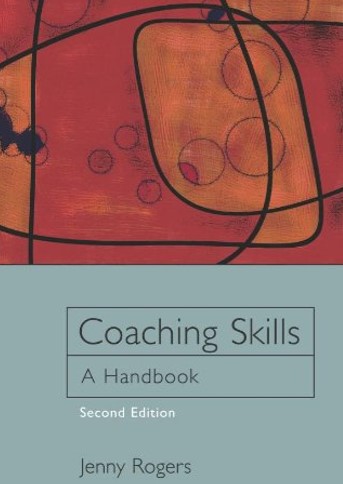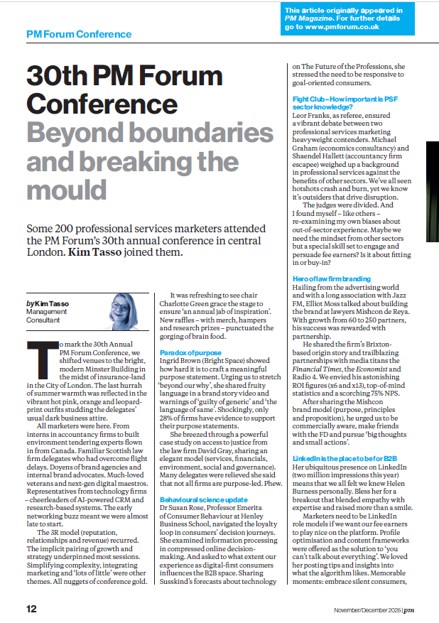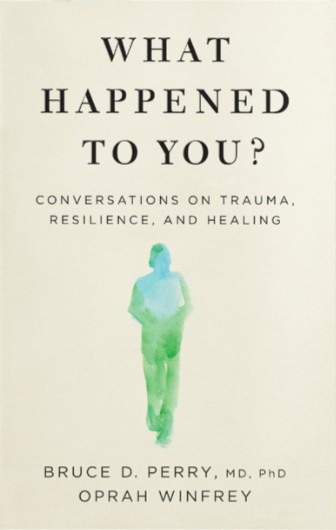
Delegates on my coaching training sessions often ask for recommendations of good books on coaching and this is a mature, comprehensive and challenging exploration of what it takes to be a great coach. So here is a book review of Coaching skills: A handbook by Jenny Rogers. It was first published in 2004 and this second edition is from 2008. I qualified as a coach in 2002, having had the great privilege of the late Eric Parsloe (who wrote many books on coaching) as my supervisor. I’ve coached a lot of people since then – both the most senior leaders as well as younger, aspiring professionals in the legal, accountancy and property sectors. And I’ve read a lot of books on coaching and counselling (where I am currently on my fifth and final year of training).
About the author
The author is a pioneer in executive coaching in the UK and author of Adults Learning (Open University Press). She ran management development and leadership programmes at the BBC before founding a leading coaching consultancy. She explains that the book was designed to help people understand what coaching is, how it works and how to do it. Her intended readers span trainee coaches to counsellors/therapists. She estimates that it takes 1,000 hours of working with clients to become reasonably adept as a coach and to work with any client probably needs at least another 2,000 hours obtained over a number of years.
I loved her quote in the introduction: “As a great coach you have a self-confident fascination with how people achieve their potential and a wish to go with them on that journey; unbounded curiosity about people; intuition into what makes them tick; a high degree of self-knowledge; the self-discipline to keep yourself out of the way and the ability to resist giving advice or wanting to be right”.
What is coaching?
After exploring many of the common myths and misunderstandings of coaching (primarily driven by a client’s fear of vulnerability and loss of control) she explores the six principles of coaching:
- The client is resourceful
- The coach’s role is to develop the client’s resourcefulness through skilful questioning, challenge and support
- Coaching addresses the whole person – past, present and future
- The client sets the agenda
- The coach and the client are equals
- Coaching is about change and action
She then explores the difference between the “being self” and the “doing self” and both inner and outer change drivers. It was interesting to hear that the most common pattern of coaching for her is six two-hour sessions over a four-month period.
She confirms that the coach usually prepares the client for the first session with some introductory paperwork and exercises – including the client’s draft of their goals for the entire coaching process. She normally addresses two or three topics in each session from which the client leaves with a plan of action around each of their goals. (By the why, the book Helping people change: Coaching with compassion (kimtasso.com) addresses in detail what to do when clients do not have goals).
She explores the differences in life coaching (addressing whole life dilemmas such as personal relationships, life balance and planning for the future) and executive coaching. Then the differences between coaching and other disciplines such as psychiatry and psychotherapy and observes “some psychotherapists consider that there is no boundary with coaching” although she helpfully points out that the most important distinction is the probable mental state of the client (and that therapists see their clients for 50 minutes every week over several months – sometimes years).
There are interesting observations about the similarities and differences between counselling and coaching. For example, she admits to drawing on many approaches developed in therapeutic settings (for example, the empty chair from Gestalt). She touches on the differences between coaching, mentoring, training and line management too.
Creating trust
A key theme is respecting the client’s right to choose – so that rules out the idea of coaches providing advice. She argues that “if advice worked as a helping tactic, it might be possible to make a case for it as a prime approach to coaching. However, it doesn’t”.
The somewhat long preamble about what coaching is and what it isn’t continues with advice against rescuing clients “If you step in as rescuer with clients you deny them their ownership of the issue”. And she suggests that if clients ask for advice coaches should use dilemma-solving techniques such as identifying all the options and rating them. She helpfully lists the many conditions that need to be in place before, on rare occasions, coaches give advice.
There’s an interesting diversion here into the life positions in Transactional Analysis as the author explores the need for coaches to be highly self-aware.
There is good advice on creating rapport such as authentic listening (including the three levels of listening) as well as Humanist concepts such as congruence and the use of non-verbal communication and unconditional acceptance (i.e. being non-judgemental and avoiding assumptions).
There’s also an exploration of the need to work from the client’s agenda. She examines the responsibilities of both the client and the coach in being worthy of trust.
Skilled language of coaching
“Asking the right questions, phrasing your comments in just the right way…this is a prime coaching skill”.
The author explores situations where inexperienced coaches might ask “advice-in-disguise” or leading questions and the other traps they may fall into. She observes that the more you know about the content, the more likely you are to be seduced into the role of expert. This is reassuring to those coaches who have little knowledge of their client’s environments or work.
She then moves on to describe tactics that work – broadly suggesting you use divergent rather than convergent thinking. At page 68 we start to see more practical help for coaches – starting with effective questioning (and even “magic” questions which might be equally useful during a sales conversation):
- What’s the issue?
- What makes it an issue now?
- Who owns the issue/problem?
- How important is it on a 1-10 scale?
- How much energy do you have for a solution on a 1-10 scale?
- What are the implications of doing nothing?
- What have you already tried?
- What’s standing in the way of an ideal outcome?
- What’s your own responsibility for what’s been happening?
- What early signs are there that things might be getting better?
- Imagine yourself at your most resourceful, what do you say to yourself about this issue?
- What are the options for action here?
- What criteria will you use to judge the options?
- Which options seems the best one against those criteria?
- So what’s the first/next step?
- When will you take that step?
Like therapists, she argues that coaches must be able to explore client’s feelings. And offers pointers on how to differentiate between thoughts and feelings.
There follows practical guidance on other coaching tools such as brevity, summarising, getting to the crux, interrupting, precision in language (assuming a positive outcome – “When you label something difficult, you create the expectation of failure”), watching for nominalizations, encouraging clients to be specific and moving the discussion on.
Taking stock – the learning client
“The process of coaching begins with an assessment of where the client is now. Our prime task as coaches is to facilitate learning for the client”.
Then she talks about the challenge for coaches on whether to provide feedback to clients – to help them see how others might perceive them. And how to break through the feedback-exclusion zone including asking the client for a summary autobiography, asking about family and life history, a life in the day, lifelines, Johari windows, 360 degree feedback (and responses) and psychometrics. (See, for example: Personality assessment as part of the coaching and development process (kimtasso.com))
Creating goals for coaching
Most of this chapter is based on observation of trainee coaches and findings from research.
She reminds us that the client’s responsibility is to set the agenda and the coach’s responsibility to clarify and frame the goal. All sessions start with a catch up. She explores how to respond to common issues such as: trying to change someone who isn’t present, the goal is too large and client hasn’t set any goals.
She continues with techniques such as reframing – changing negatives into positives, hierarchy of goals and transaction (performance) vs transformational (learning) goals. She urges coaches to concentrate on strengths not weaknesses.
And considers difficulties with the organization’s goals in executive coaching (suggested solution is to arrange a three cornered meeting with the client’s boss. She then considers whether the client is coachable. Various tools are mentioned such as the popular wheel of life and alternatives such as drawing, life purpose questions, ideal day description, postcards from the future, identifying values and drivers and guided meditations on the future self (sample script provided).
She also covers making goals SMART, accountability, challenging and follow up behaviours.
Coaching clients through change
There’s an exploration of the three psychological elements in any change – rational thought, emotion and behaviour (for further information on these three elements read the short book Change management book – Switch (Chip & Dan Heath) (kimtasso.com)).
She points out that change is complex because even when we freely choose it, there will be some loss and describes the Kubler-Ross framework (this eight minute video describes the Kubler-Ross emotional change process). And goes on to describe William Bridges work on transitions (for details read Your personal transition – Endings, neutral zone and new beginnings (kimtasso.com)).
Self-limiting beliefs (Before your set your goals – check your limiting assumptions (kimtasso.com)) and self-sabotaging are also covered.
There’s guidance on spotting other flawed thinking patterns as well as Transactional Analysis on discounting where we can deny reality and resist change where it’s explained how coaches can help to identify the pay-off for staying stuck. She offers help in what to do when the client asserts that it’s always someone else’s fault. There are many undertones of counselling practice in this section.
Bringing pace and interest to the session
This section starts with a helpful outline of a typical two hour coaching session before offering a variety of ways to maintain interest and attention (e.g. changing the physical pace (e.g. drawing, walking, stepping stones across sheets of paper), brainstorming, empty chair technique (again, with a helpful script) and role play). Shadowing, observing and real-time coaching – where the coach joins the client in day-to-day activities – is suggested for the bravest clients.
Practising professionally
Topics such as ethics, ethical dilemmas and supervision (normative, formative, supportive) and reflective practice are explored. This is followed by guidance on note-taking, training and development for coaches as well as accreditation. I was interested to see her views on parallel qualifications of use to coaches.
There’s an interesting section on return on investment and proving the value of coaching.
The heart of coaching – the coach-client relationship
The author makes the point that coaching is more than process and techniques (this book contains many coaching techniques and tools: Coaching models – book review of Stephen Gibson’s book (kimtasso.com) So I was pleased to see this section focus on the importance of the coach-client relationship.
She talks about a relationship of equals rather than the power or expert models. She describes the need for coaches to be real (authenticity) and the Humanistic principle of congruence. She asserts the need to ask the client for permission before offering feedback (The art of giving feedback – top tips (kimtasso.com)) “Coaching is one of the few occasions where anyone is permitted, even encouraged, to comment on the immediate behaviour of the other person”.
But warns against interpretation and suggests the coach describes the impact on themselves. She touches on the use of provocation and humour with examples. She also talks about how to elicit and receive feedback as a coach too (typically what the client found most useful in a session).
There’s helpful advice on what to do when tough speaking becomes a form of confrontation and ends with comments about humility and acknowledging when the client has been courageous or has learned or changed.
There’s advice on what to do if the client cries or experiences other cathartic moments. And help in identifying when clients are traumatised, bereaved or stressed (refer them to a therapist). Tricky issues about coach’s self-disclosing and other boundary issues (e.g. where clients become friends) strays in psychodynamics as it looks as subconscious processes such as transference, counter-transference and endings.
My views on Coaching skills: A handbook by Jenny Rogers
I wouldn’t necessarily suggest this as a book for beginners (I reviewed other books that meet this need), but I would thoroughly recommend it to those who are qualified as coaches and need support in developing their skills and practice. I liked the book tremendously as it conveyed the great skill needed by excellent coaches and dispels the common misconceptions about coaching. It contains lots of helpful and practical advice. Counsellors will relate well to the material and find it helpful to incorporate elements into their therapeutic practice.
Throughout the book there are helpful examples and stories of coaching situations (including those of people in the professions) which highlight and illustrate the key points made in the text. I like too that there are numerous references to therapeutic theories and tools (like Transactional Analysis https://kimtasso.com/psychology-business-communication-introduction-transactional-analysis-ta/) and that it taps into other great works on coaching such as those by Timothy Gallwey and John Whitmore.
Contents of Coaching skills: A handbook by Jenny Rogers
- What is coaching?
- Creating trust: foundation values and practices for coaches
- Simple but not easy: the skilled language of coaching
- Taking stock: the learning client
- Choosing the future: creating goals for coaching
- Coaching clients through change
- Bringing pace and interest to the session
- Practising professionally
- The heart of coaching: the coach-client relationship
Other books on coaching
Coaching models – book review of Stephen Gibson’s book (kimtasso.com) Other useful and popular coaching books are listed at the end of this article
Helping people change: Coaching with compassion (kimtasso.com)
Book review: The psychology of successful women by Shona Rowan (kimtasso.com)
I present a course on coaching and consulting skills for marketing and BD professionals for the PM Forum. See, for example: Coaching and consulting skills for M&BD workshop (November 2021) (kimtasso.com) or Don’t jump to conclusions – Coaching and Consulting skills (kimtasso.com). There’s also a short video introducing three basic coaching models Soft skills: Introduction to coaching – Three frameworks (kimtasso.com)
Articles on coaching skills
These articles on coaching skills may also be of interest
Coaching skills – the power of questions (kimtasso.com)
Coaching skills – the importance of active listening – Kim Tasso
The art of giving feedback – top tips (kimtasso.com)
Before your set your goals – check your limiting assumptions (kimtasso.com)
Boost training effectiveness by incorporating learning theory (kimtasso.com)
Delegation for leaders – a how to guide (kimtasso.com)
change process – Emotions when reacting to change (kimtasso.com)
Resources to help you deal with difficult interactions (kimtasso.com)
Your personal transition – Endings, neutral zone and new beginnings (kimtasso.com)
Changing behaviour in the workplace to boost productivity – psychology (kimtasso.com)








